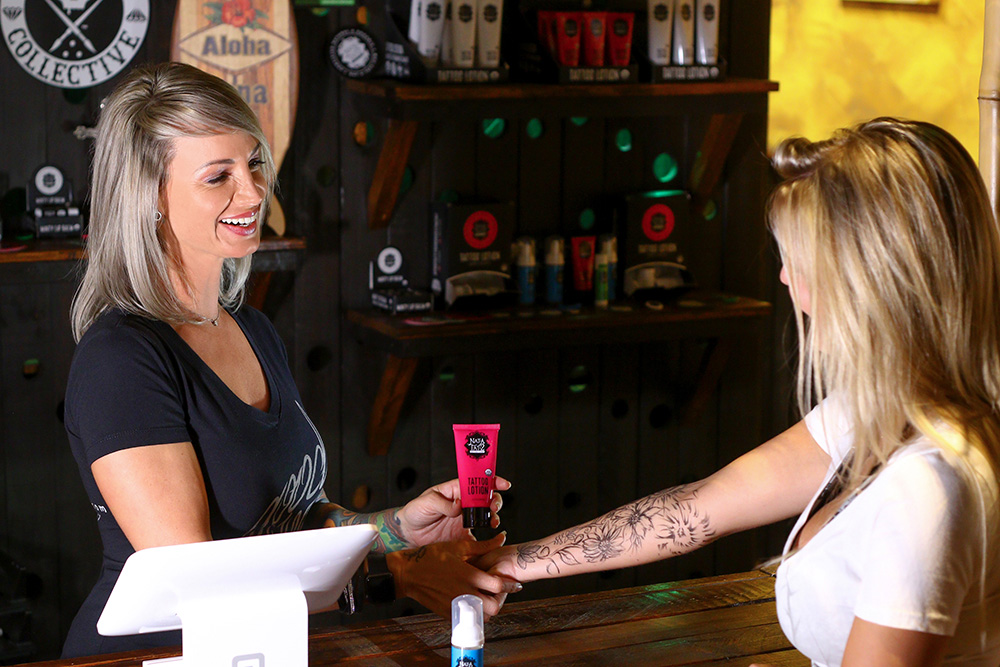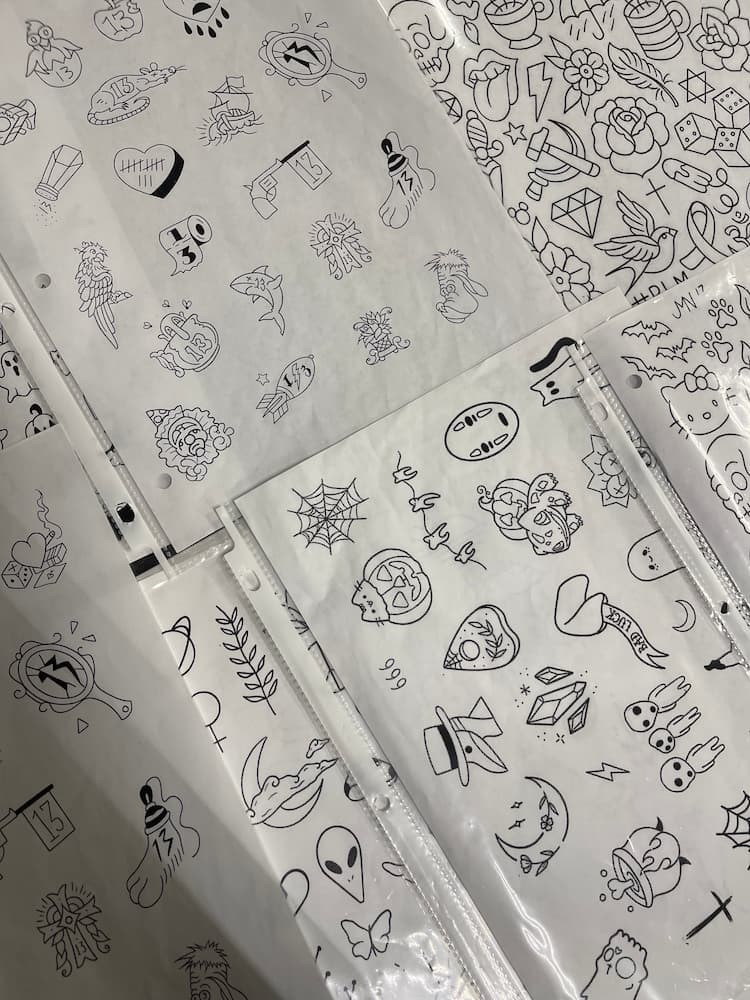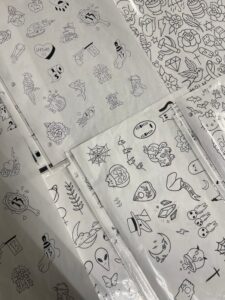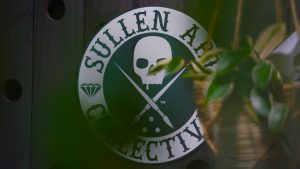While you carefully selected your tattoo design or text, your tattoo artist took precautions to protect your new ink. As your new tattoo heals, you might question whether the process is going well. Scabbing, peeling, and even leaking are common during the healing process. Leaking plasma, blood, or ink is not necessarily a sign of infection. It’s your body’s natural healing response for open wounds.
Your tattoo is essentially an open wound vulnerable to bacteria and infection. The initial covering your artist wraps your new ink in has an important role – to prevent airborne bacteria from entering the freshly tattooed area. Leaving the initial bandage on for the first day is important to ensure proper protection.
Although your tattoo artist should have provided instructions on how to care for your new tattoo during the healing process, we understand if you missed or forgot some details. If you see your tattoo oozing or leaking a clear fluid, you might be concerned if this is normal or a sign of infection. Understanding the role of plasma and proper tattoo aftercare can help alleviate your worries.
Why does plasma leak out of tattoos?
After getting a tattoo, your skin becomes highly sensitive, inflamed, and red. This is your body’s natural response to wounds as your immune system sends white blood cells to the area to heal the skin. Among these cells are macrophages, which act as the body’s “clean-up crew” by attempting to remove the newly introduced ink particles.
This immune response can contribute to swelling that typically subsides within the first few days after getting a tattoo. It is normal for the tattooed area to exude clear, yellow, or blood-tinged fluids for several days. During the initial healing phase, your fresh tattoo should be covered with a thin layer of antibiotic ointment and a bandage, creating a semi-occlusive environment.
This oxygen deprivation tricks your body into directing more blood flow and healing signals to the damaged tissue. Consequently, your tattoo may discharge a small amount of plasma in the first few days. If the fluid leaking from your tattoo is clear, it is likely not pus and not an indication of infection. However, if redness, swelling, or pain persists beyond two to three days, it’s advised to seek an evaluation from your tattoo artist to ensure proper healing.
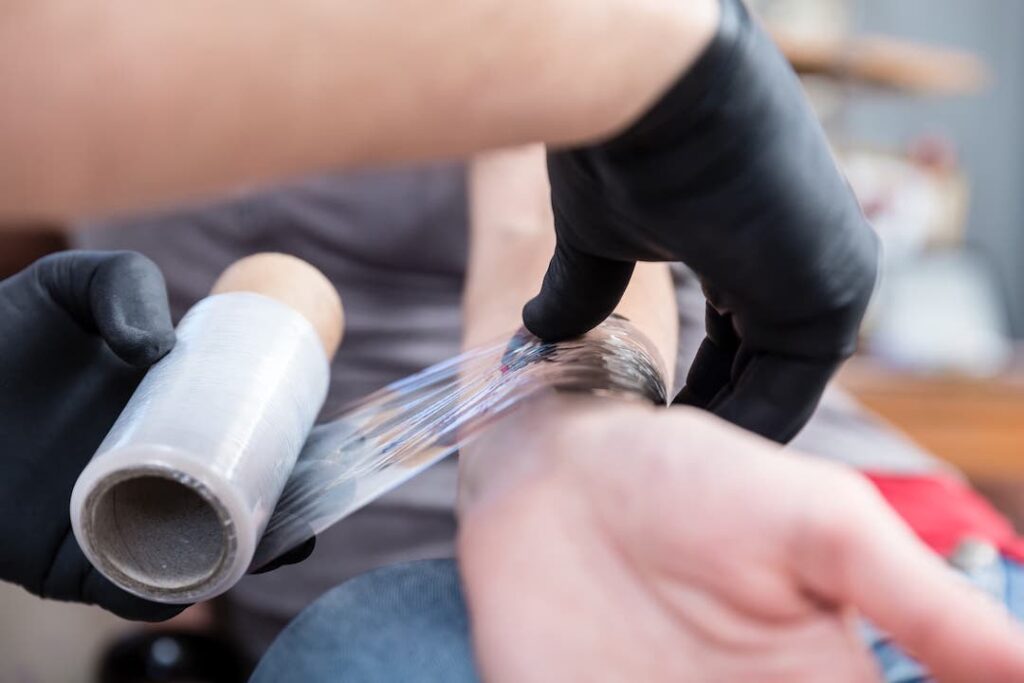
What does plasma do?
Although plasma may seem unusual since tattooed skin appears intact, it’s important to remember that a tattoo is a wound. The body’s natural response to any injury is to protect itself and initiate healing mechanisms. Plasma is the fluid that may leak from the skin after getting a tattoo and is a normal part of the healing process. This plasma is rich in white blood cells that fight off infection and trigger the body’s immune response and healing. Allowing the tattoo to “marinate” in its own plasma can benefit healing.
When your skin undergoes trauma from tattooing (repeated needle stabs into the skin), the body releases cytokines (inflammatory and anti-inflammatory responses) that increase vascular permeability. Increased vascular permeability allows plasma (the liquid part of blood) to leak out of the blood vessels and contribute to the healing process.
Plasma is crucial in creating a barrier between the skin and the air. By forming a scab, the plasma stops bleeding and seals off the tattooed area from potential infection. While plasma has incredible healing properties, its effectiveness diminishes after this time. Plasma cells (in their liquid form) are only effective for approximately 24 hours. Therefore, allowing the plasma to remain on the tattoo during the initial healing period can promote faster healing.
What color is plasma?
Plasma is a clear fluid discharge. Clear fluid is a sign that the body is working diligently to heal the wound. Leakage does not indicate infection but rather that the body is going above and beyond its usual healing process. We advise that you take it easy for a few days so your body has the resources to heal effectively.
The difference between plasma and pus
If you notice only clear fluid discharge from your new tattoo, it is likely plasma, not pus.
Plasma is a yellowish-clear fluid that is a natural part of your body’s healing process and helps regenerate your tattooed skin. Pus, on the other hand, is thicker and has increased redness around the tattoo, swelling, pain, and a foul odor. These are a sign of infection.
While seeing a bit of plasma during the initial stages of healing is normal, there is always a risk of infection with open wounds. Increased redness, pain, fever, or blisters in the tattooed area can indicate an infection. We recommend coming in and speaking with your artist if you have any concerns.
Quick tips to help your tattoo heal
- Rest immediately after tattooing: Give your body extra rest after getting a tattoo, especially if it’s below the waist. Your blood pressure is higher below the waist which will cause increased inflammation around tattoos in these areas. Treat your new tattoo like you treat a sprain to lower your discomfort and reduce healing time. Try the following steps:
- Lay down for a few hours and elevate the tattooed area above your heart.
- Cover the tattoo bandage with a clean t-shirt or hand towel.
- Apply an ice pack (wrapped in a cloth) to soothe the area. Avoid placing the ice pack directly on the bandage to prevent frostbite.

- Proper bandaging and swelling management: The initial bandage should fit snugly but not too tightly. If swelling becomes severe and causes the bandage to tighten painfully, apply a wrapped ice pack to the area to reduce the swelling. It may be necessary to remove the bandage.
- Prevent plasma bonding with fabric: Keep the bandage on overnight after getting a tattoo. Without a bandage, the contact between your oozing tattoo and fabric can cause the plasma to harden and your tattoo to stick to the fabric. If this happens, don’t forcefully remove it. Take a warm (not hot) shower with the fabric and gently soak it and the tattoo with warm water until they separate easily. Ripping it free will be painful and can reopen the wound. This can lead to scabbing, color loss, and scar tissue (which can alter your tattoo).
- Be mindful of ointment application: If you notice excessive leaking beyond three or four days, you’re probably applying too much ointment. Remember that a little goes a long way. There’s no need to panic if the fluid appears clear and the tattoo is not hot or red. Check if your skin feels wet afterward. If it does, you’re using too much ointment.
- Monitor leaking ink and fluids: It’s normal for some ink and fluids to leak from the tattooed area for a few days (2 -3 days). If this continues longer than 4 days, something is interfering with the healing process. Certain ointments can increase leakage, so if you’ve been using petroleum jelly or similar products, switch to a more tattoo-friendly product like IKONIK’s Epik Cream for quality care.
- Steer clear of swimming and direct sunlight: UV light hinders wound healing and can cause ink fading. Cover your tattoo with a bandage or SPF clothing if you must be in the sun, and seek shade whenever possible. Remember to apply a broad-spectrum, water-resistant sunscreen with an SPF of 30 or higher 15 minutes before going outside and reapply every two hours.
Help your tattoo stand the test of time
Understanding the role of plasma in the tattoo healing process can significantly enhance your overall tattoo experience. By harnessing the natural healing power of your body’s plasma, you can promote faster healing, reduced scabbing, and enhanced color retention, ultimately resulting in a vibrant and long-lasting tattoo.
The award-winning artists at Good Vibrations Ink are dedicated to providing you with a great tattoo experience, exceptional artistry, and comprehensive aftercare guidance. If you’re ready for your first tattoo or looking to add more to your collection, please contact us for an appointment or stop by one of our shops on International Drive in Orlando, Florida.

